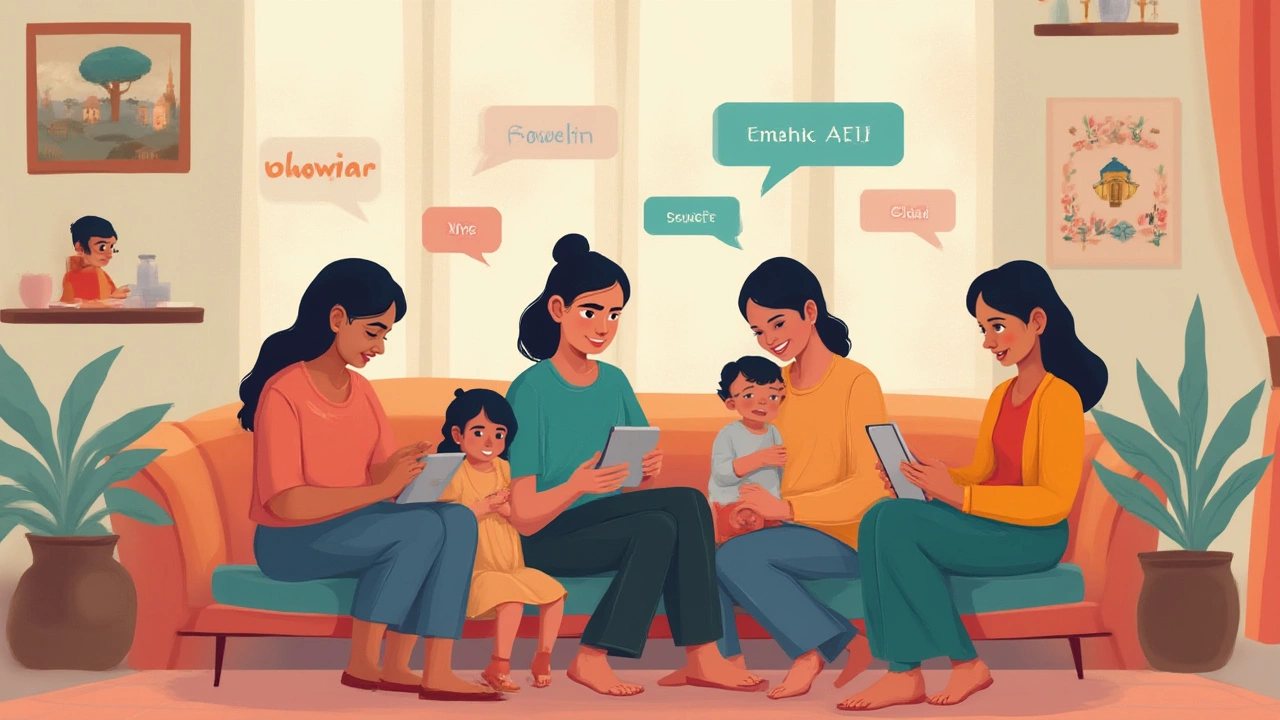Starting to learn a language as an adult isn’t just brave—it’s downright rebellious. Decades of comfy routines, set ideas, and maybe a few language-class traumas—adult beginners march past all that and dive into English. But teaching English to adults is a wild ride full of hidden treasures (think late-blooming confidence) and the occasional pothole (hello, silent class). You can spot the courage in every classroom: nervous greetings, hesitant “Good morning” attempts, blurry memories of grammar from school days, and that one student who swears they’re “too old” to remember anything new. The truth? Adults can learn English brilliantly, but the journey needs to fit them and their lives—not outdated textbooks or too-cute games meant for kids.
Understanding the Unique Needs of Adult Learners
Adults walk into English classes with lives overflowing with responsibilities—jobs, families, cultures, hopes, and fears. Unlike children, grownups usually bring strong motivation: maybe for a better job, connecting with a grandchild abroad, or traveling the world. But they also lug along insecurities, old habits, and the belief that learning is a young person’s game. Fun fact: the European Commission did a deep dive in 2023 showing that adult learners thrive when material connects to their real lives. They want to learn what’s actually useful, not just pass a test.
The first roadblock? Fear of embarrassment. Adults hate looking silly or making mistakes, especially in front of others. Adult brains also learn differently: while kids simply absorb, adults want to analyze, ask why, and see the logic behind every sentence. That’s not a bug, it’s a feature. It means adults often want teachers to explain, not just repeat. And real life doesn’t pause—jobs call, family stuff happens—so flexibility is key. For some, English is a sideline, squeezed in after work or between errands. Keeping lessons meaningful helps the information stick, even when study time runs short.
Cultural backgrounds matter. Students from some cultures may hesitate to speak up or make direct eye contact, while others expect grammar drills. Teachers have to read the room and adapt. Age shouldn’t scare anyone, but it does shift the approach. Research from Cambridge Assessment English in 2022 found adults appreciate feedback that is honest but never discouraging. They’re also fans of goal-setting—seeing progress keeps them coming back instead of slipping away quietly mid-course.
Finally, priorities matter. Maybe one student wants workplace English for construction sites; another just needs chatty English for online shopping. When teachers tailor topics to those immediate needs (calling a plumber, explaining health symptoms, telling a story), adults light up with satisfaction—and retention rates soar. That’s where the magic happens: showing students that English is the key, not just to tests, but to real life right outside the classroom window.
Step-by-Step Approaches That Actually Work
Forget grammar lectures and endless verb tables for a moment. The best results come from mixing real conversation, hands-on practice, and authentic context. Try starting lessons with "Can you..." tasks: Can you order coffee? Can you ask for directions? Can you fill out a form at the doctor? Starting with true basics—introductions, numbers, days of the week, directions—primes adults for small wins. Teach English to adults by breaking big ideas into mini, doable steps. Set up achievable goals, like greeting someone at work or sending a short email. Every little win tells the adult brain, Hey! This is possible!
Flashcards, matching games with images, and short role-plays help. It sounds childlike; it isn’t. Adults love practicing with fellow learners, not just listening to the teacher. Try mixing partners so everyone gets comfortable with new accents, voices, and personalities. It’s a safe way to practice without the real-life stakes. Don’t forget humor—a good laugh makes even harsh grammar rules stick.
Use real-life materials: printed receipts, signs snapped with your phone, simple restaurant menus, or even WhatsApp chats (anonymized, of course). These are way more engaging than stilted textbook conversations. A 2021 study from TESOL Quarterly found that adults remembered vocabulary twice as well when they learned it through real-world scenarios, not traditional drills. Take advantage of that!
Keep explanations visual and concrete. Don’t drown beginners in a sea of grammar lingo. Use pictures, physical gestures, and short, repetitive phrases. If you’re talking about food, bring in packages, draw a pizza, show a recipe. With each lesson, add a little more challenge. Swap “What is your name?” for “Where did you grow up?” Step it up at the student’s pace, not yours.
Songs and videos work, but skip the ones for kids. Adults groove better with catchy TV ads, easy sitcom snippets, or song lyrics with missing words. Apps like Duolingo or Memrise offer daily bite-size lessons—perfect for busy learners—but don’t let them do all the work. Use these as bonuses, not the foundation. Human connection trumps screens every time, especially for speaking and listening practice.
Check for understanding often. A confused face, a long pause, or constant silence usually means you need to slow down or switch gears. Revisit tough topics using different formats: conversation, writing, games. Build in praise—nothing fake, just honest cheers for brave attempts. Every smile in class counts for more than points on a quiz.

Motivation, Confidence, and Breaking the Ice
Staying motivated may be the toughest hurdle for adults. Life interrupts, frustration builds, and the “I’m too old” myth sneaks in. The hack? Connect English to something they care about now. If a student loves cooking, work from recipes. Have business professionals role-play meetings or write quick, real emails. One 2024 project by the British Council showed that classes using life-goal-based learning kept 30% more students long-term than those chasing textbook chapters.
Celebrate every step, no matter how small. Reward consistency—“You’re showing up every week, that’s huge.” Mark progress publicly (with permission), maybe a group chart or gold stars if your crowd likes them. The thrill of progress keeps momentum alive, even if it’s slow.
Break the ice with low-pressure speaking games—two truths and a lie, or telling your weekend in pictures. Pair shy folks with chattier students. The idea is to make mistakes funny, a normal part of class life, not something to dread. Language cafés, field trips to a local supermarket, or online video chats with learners worldwide add real spice and a sense of adventure. Adults often light up outside the classroom, where English blends with coffee, snacks, or daily errands.
Use their native language as a starting point if needed, but keep English as the main event. Reassure them that mixing in first-language words when stuck is normal (and brain-friendlier than pretending you know everything). Authenticity wins trust: share your own funny mistakes in another language—they’ll feel safer admitting theirs.
Give plenty of opportunities for learners to hear themselves: voice memos, recording short videos, or even reading aloud to their pets. Hearing progress (however gradual) is strangely motivating for adult learners. Sometimes the sound of their own English is the moment grownup doubts start to crumble.
Tools, Technology, and Real-World Practice
Teaching tools have exploded in the last decade. Language apps, online videos, and interactive workbooks can boost any lesson. Don’t toss out the classics, though—a sticky note on a fridge, a grocery list in English, or old-fashioned flashcards can be as effective as the newest app when used regularly.
Smartphones make lessons portable. Set up a class WhatsApp group for short English messages, questions, or reminders. Try using Google Translate wisely (not for cheating, but as a safety net for tough new words or emergency explanations). Have your class use speech-to-text tools—many adults love seeing their words magically appear on the screen. Record “English diaries”: thirty seconds of speaking about their day, once a week. Soon, even quiet students will hear their growth.
Tap into podcasts made for learners, like BBC Learning English or Voice of America’s everyday English stories. For YouTube, short news recaps or daily routines—look for subtitles and slow pace. Technology should support, not replace, live speaking and writing. It works best as homework, practice, or confidence boost, not as your only classroom engine.
Encourage immersion beyond class. Tell your students to read English packaging, listen for English at work, or watch English-language cartoons with their kids or grandkids. The real world is a living textbook. Even one English conversation with a bus driver or a neighbor is a win worthy of fireworks. Step-by-step, these tiny moments build into true confidence.
Bring in guest speakers—local volunteers, friends, or professionals—who share quick stories or let learners practice real conversations. Arrange class outings: order in English at a café, navigate a library, or tour a museum. These adventures create sticky memories that outlast any worksheet. If possible, set up video calls with English learners from other countries. Two intermediate learners making mistakes with each other is double the real-world practice—and twice the fun.
So, if you find yourself staring at a group of adult beginners, don’t panic. Remember, it’s never too late for new words and new friends. Adults just need space to be themselves, make a few brave mistakes, and see English as a part of life, not just another subject. The reward isn’t just better English—it’s expanded worlds and new confidence, one step at a time.
